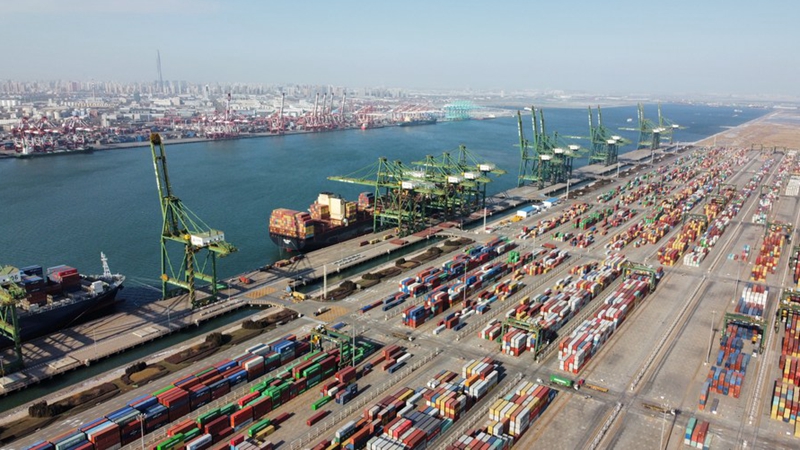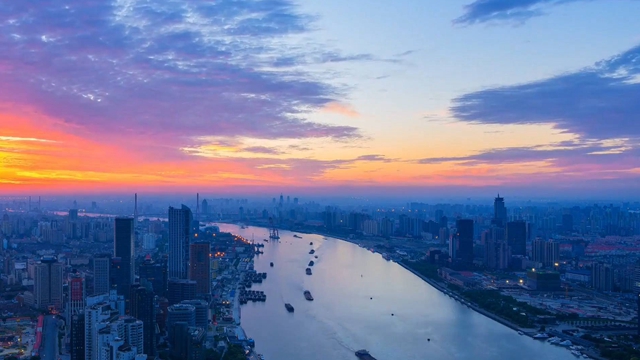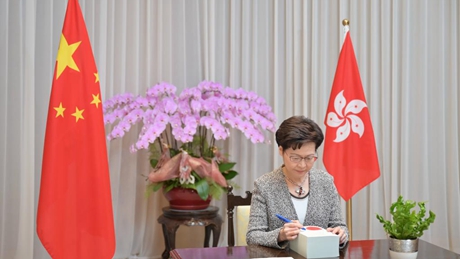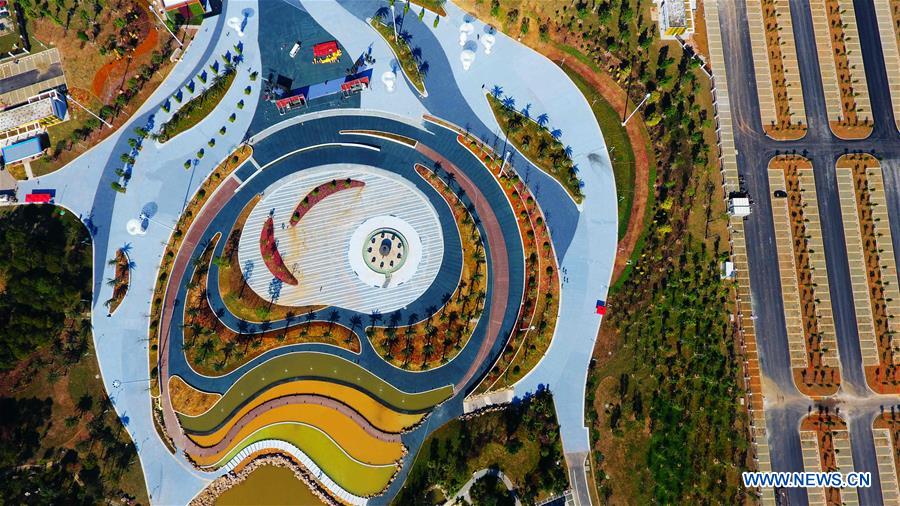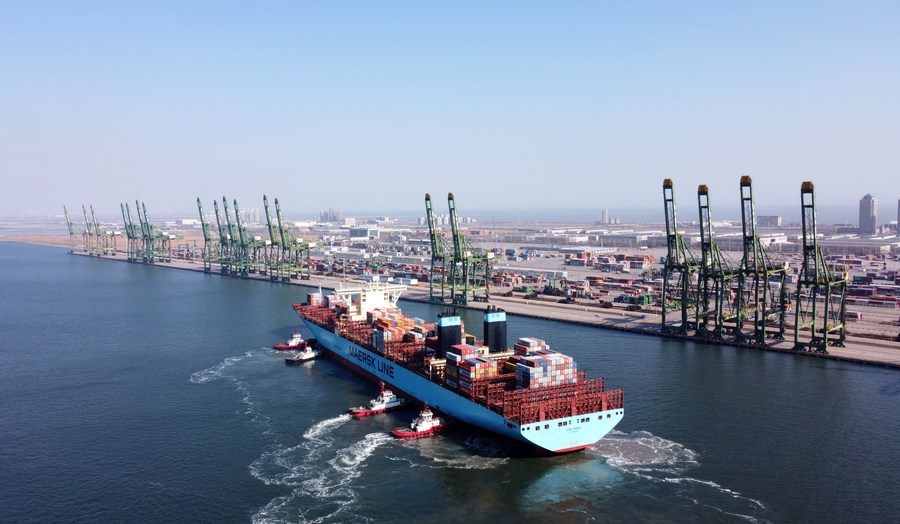
Aerial photo shows a container vessel sailing into Tianjin Port in north China's Tianjin Municipality, Feb. 22, 2021. (Xinhua/Zhao Zishuo)
Leaving Tianjin Port, a vessel carrying timber imported from Germany, wheat from Russia and paper pulp from the United States headed to the Caofeidian Port in the coastal city of Tangshan, Hebei Province.
Wu Zhiming, general manager of a timber trade company based in Nanjing, Jiangsu Province, said his company used to hire trucks to deliver timber to Tangshan after the Germany-made spruce timber was shipped to Tianjin.
"The branch sea route within the Bohai Sea has saved us 20 percent of logistic costs, with more reliable arrival time," said Wu, adding that they will have more cargo shipped via the route.
Tianjin Port serves the megacities of Beijing and Tianjin, as well as the emerging Xiong'an New Area in Hebei.
"The port not only serves the foreign trade and production, but also helps with consumption to cater to people's pursuit of better lives," said Chu, TPG chairman of the board.
Cheng Zeming, the son of truck driver Cheng Weidong, is fascinated with the new autonomous driving container cranes at Tianjin Port. The 11-year-old said when he grows up, he would like to work in the port just like his father and grandfather.
"With cutting-edge 5G and AI technologies, I can't imagine what the port will be like when my son starts to work," said Cheng Weidong.
(Xinhua correspondents Liu Yuanxu, Li Kun, Zhang Yuqi, Wang Hui contributed to the story.)

